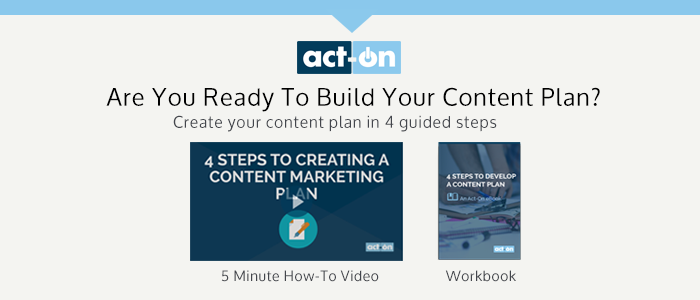“Wow, that YouTube video has got more than a million views already!”
Have you ever thought this after seeing a company’s so-called “viral” video? You might have watched the video ad just to see why it was so popular. And you might have thought, “Huh, that video wasn’t very good. Why are people watching it?”
Did this video make you want to buy the product, or take action to find out more about that company’s services? Unless you’re in that product’s target market, probably not.
The YouTube view count is probably the most well-known statistic in social media. It’s quoted in conversations, on TV, in blogs, everywhere.
But the real truth is YouTube views don’t matter. Not much, anyway.
Here’s why:
You don’t know if the views are paid or organic
Everyone has seen those skippable pre-roll videos on YouTube, right? The ones where the timer counts down from 5 to 1, then the counter image changes into an image giving you the option to “Skip Ad.” Well, those pre-rolls are YouTube videos, too, and views from paid campaigns count toward the video’s official view count, just the same as organic views resulting from someone finding it via YouTube search.
Here’s the familiar pre-roll, “in-stream” ad we see all the time on YouTube. But the core video that is playing in the pre-roll is just a normal YouTube video that’s being amplified with paid views. If you discovered this video via YouTube search rather than as a pre-roll, its view count would include both paid and organic views; but you, the viewer, would not know how many of those views were paid.
You don’t know how much of the video is being watched
A common misconception of YouTube views, whether paid or organic, is that someone has watched all or most of a video. Not true. On YouTube, someone has to watch >30 seconds to be counted a view. For videos longer than 30 seconds, advertisers are only charged when someone watches for 30 seconds or more (or clicks on the advertiser link in the lower left).
But, in truth, the amount of time watched to count as a view shouldn’t really matter, unless you are using view count as your primary metric of success, which you should not.
There are better things to track
Much more important than the YouTube view count is the targeting of that video as an ad, or the organic viewership’s level of engagement with that same video. If those views are creating awareness among the right audience, or if the video is creating sales, that’s great. But views for view’s sake are just a vanity metric.
Other than just trying to look respectable, the implicit idea behind having lots of views on an ad is that
- You’ll sell more stuff (or)
- You’ll get ranked higher in YouTube search (or higher in suggested videos, which appear in the right column of video watch pages).
But neither of these goals can be accomplished with views alone.
Selling more stuff
For the goal of selling more stuff, views only matter if you’re targeting the right audiences, and if your ad is effective. These are basic principles of advertising. But often targeting is sacrificed with the goal of getting more views, no matter the results.
Trying to get ranked higher on YouTube by getting more views
The YouTube algorithm stopped ranking videos mostly by view counts several years ago. Instead, today videos are ranked by an algorithm based on “Watch Time,” which is a shortcut description for a number of factors that YouTube doesn’t exactly spell out. YouTube says the longer people watch your videos organically, or the longer they watch your videos as part of an overall YouTube-watching session that includes videos by other channels, they will rank your videos higher.
How much does it cost to buy 1 million views?
If a company were just looking for views without any targeting, they could get a million views for less than $10,000. And while $10,000 is a notable price for a small business to spend on a vanity metric of a million views, for a large company that just spent, say, $100,000 or so shooting a TV commercial that’s going to be repurposed to go on YouTube, it’s not that much.
The lowest possible price possible per view is one cent. So $.01 x 1,000,000 equals $10,000, a reasonable price to get a million views. Technically, you could get this for a lower price, because on some pre-roll ads you will get views counted toward your videos without the viewers watching long enough to be billed within the ad system.
But who would we target in this sample YouTube ad? Well, if you didn’t care who the ad targeted, or where or when, you could do it cheap, but it wouldn’t be very effective. You could run the ad in a foreign country where views were cheaper (and where you might not even do business). You could decline to target by age range, or gender, or interest… or anything.
The YouTube TrueView/AdWords for video system would be happy to sell you those views. But what would this accomplish? It will simply get you a big number to show your boss. That is fine as long as he doesn’t ask any pesky questions about who watched the video or why it’s not getting any results other than views.
Is the ad effective because it reached a million views? Only if it’s well targeted in both the distribution and the way the video communicates its message, and eventually leads to brand lift and sales.
Here are some better metrics
There are some metrics to measure the effectiveness of a video. These numbers are harder to find, and a little more difficult to describe – and none, sadly, are as sexy as the YouTube view count.
It’s pretty hard to reverse-engineer the YouTube algorithm, but here are several apples-to-apples metrics that will help you infer how a video is doing that you can compare with your other videos.
1) Organic Audience Retention
YouTube “Audience Retention” is a heat map that shows what percentage of viewers are watching at any given second during a video. This is a pretty awesome metric. It breaks out retention by paid and organic views. Basically, you’re trying to figure out how long people are watching on average. One way to look at is at what time 50% of the audience has left the video. If it’s after just a few seconds, the video isn’t very compelling to the audience you’re currently reaching. Note, this doesn’t mean the video is bad – it might work very well for television, for instance. But for the YouTube audience you’re currently targeting, the message is not currently resonating.
This is the Audience Retention heat map for a video that has both organic (pictured in blue) and paid views via AdWords’ TrueView in-stream (pictured in green), also known as pre-roll ads. The “Average View Duration” at the top is deceptive because it’s for the organic portion, which might be a minority of views. We can see that midway in the video, 86% of non-ad viewers are still watching, but only 15% of paid viewers. In fact, the majority of paid viewers dropped off as soon as they saw that Skip Ad after 5 seconds. Even though the advertiser was only charged for viewers that watched 30 seconds, some of the viewers who clicked off earlier still count as views.
2) Organic Subscriber Velocity
One study of the YouTube algorithm has shown that it gives more weight to videos where a high number of subscribers view a given video within 48 hours of its being posted. Logically, this shows that your biggest fans find the video relevant. So it will show up more frequently in suggested videos (the right hand column of a video “watch page”) for your subscribers and for people watching videos with similar themes to the videos on your channel.
To find subscriber velocity: Go to Analytics, then Watch Time in the left navigation, which gets you here to find out how many subscribers you’re driving. Select individual video content and dates at the top of the page.
4) Suggested Videos
With YouTube, “SEO” is really the wrong word – it’s really discoverability, because the platform recommends videos in so many places other than search. In fact, one of the top places to get traffic is in the suggested videos area, which appears in the right-hand column of each video “watch page.” These are the videos YouTube thinks people are going to want to watch next.
So the question is, how many of your other videos are being recommended from this video? And if there aren’t any being recommended, why not? Ideally, you should have between five and 10 of the first 20 videos in the right column pointing videos of your own channel.
If not, the first question you should ask yourself is – is this video relevant to my own best fans? Or is it off topic, or the wrong format for them to watch on YouTube? Or is it being described improperly in the metadata (title, tags, description)?
Also, are your thumbnails attention getters? Or are they drab? Do they have a similar look to them, so that any of your subscribers would know just by looking at a postage stamp-sized version of them for a split second? Also, is this video part of at least one playlist? And is that playlist linked to in the description of your video?
If the algorithm doesn’t think viewers of this video would like further videos on your own channel, this video is a one-and-done, and the algorithm won’t give it much traffic. It’s not that relevant to what the normal viewers of your channel want to see. Logically, this means that either this video isn’t that great for your audience, or the other videos aren’t. It’s best to pick a theme your audience will want to see again and again, and stick to it.
5) Conversions
How many conversions is each video getting? Which videos are converting the best? Do you know?
It’s baffling that in today’s age of marketing automation and tracking every click, some major companies are still not doing individual “attribution” tracking from links in the description of each YouTube video. Some don’t even put any links in the description. Simply put, each YouTube video offers a description area where you can put anything you want – for free – plus the option to linking through YouTube cards and a few other places.
There are a number of ways of tracking conversion, but basically the best way is to get a UTM code as described in this post. Then you can take that whole UTM code and put it into a Bitly link so it looks a little cleaner. Then you create a simple call-to-action, such as “Find out more: http://bitly.com/link-to-your-product-here-01.” Ideally, you should have a link-01, link-02, and so forth, with each link being different so you can track the results of each video and do more of the kind that are getting the most clicks.
So there you have it. YouTube views don’t matter. But there are many other metrics that do, if you know what to look for.
Photo Credit: Prathan Chorruangsak / Shutterstock.com
Read more:



